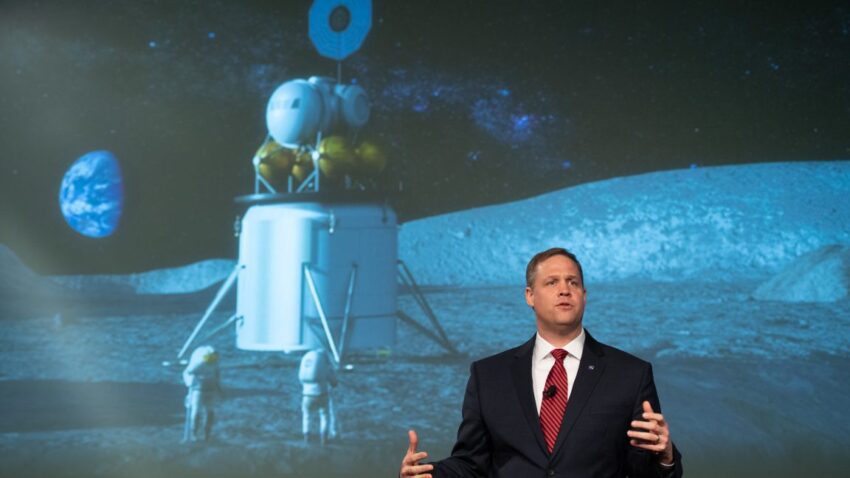
how america fell behind china in the NASA’s interim administrator, Sean Duffy, has been vocal about the agency’s commitment to outpace China in the lunar exploration race, but many industry insiders express skepticism about the feasibility of this goal.
how america fell behind china in the
The Current Landscape of Lunar Exploration
The lunar exploration race has intensified in recent years, with China making significant strides in its space program. The Chinese space agency, CNSA, has successfully landed rovers on the Moon and is actively planning future missions. In contrast, NASA’s Artemis program, which aims to return humans to the Moon by 2024, has faced numerous delays and budget constraints. The juxtaposition of these two programs highlights a growing concern among experts regarding the United States’ ability to maintain its leadership in space exploration.
Recent Developments in China’s Lunar Program
China’s lunar ambitions have been marked by a series of successful missions. The Chang’e program, named after the Chinese moon goddess, has achieved several milestones:
- Chang’e 3: Launched in 2013, this mission successfully landed a rover on the Moon’s surface, marking China’s first soft landing on the lunar body.
- Chang’e 4: In 2019, this mission made history by landing on the far side of the Moon, a feat that had never been accomplished before.
- Chang’e 5: Launched in late 2020, this mission successfully returned lunar samples to Earth, showcasing China’s advanced capabilities in space exploration.
These missions have not only demonstrated China’s technical prowess but have also solidified its position as a formidable competitor in the realm of lunar exploration.
Navigating NASA’s Challenges
While China has been making headlines with its lunar achievements, NASA has been grappling with a series of challenges that have hindered its progress. The Artemis program, which aims to land astronauts on the Moon by 2024, has faced significant delays due to various factors:
- Budget Constraints: Funding for the Artemis program has been inconsistent, leading to delays in development and testing of critical components.
- Technical Issues: NASA has encountered numerous technical challenges, particularly with the Space Launch System (SLS) rocket and the Orion spacecraft.
- COVID-19 Pandemic: The global pandemic disrupted supply chains and delayed testing schedules, further complicating NASA’s timeline.
These issues have led to skepticism among experts regarding the feasibility of meeting the ambitious timeline set for the Artemis program. Former NASA Administrator Jim Bridenstine has been particularly vocal about these concerns, stating, “Unless something changes, it is highly unlikely the United States will beat China’s projected timeline to the Moon’s surface.”
Implications of Falling Behind
The implications of the United States falling behind in the lunar race extend beyond national pride. The Moon is seen as a critical stepping stone for future space exploration, including missions to Mars and beyond. Several key factors underscore the importance of maintaining a leadership role in lunar exploration:
Strategic and Economic Considerations
Control over lunar resources could have significant strategic and economic implications. The Moon is believed to contain valuable resources, including Helium-3, a potential fuel for nuclear fusion, and rare earth elements essential for advanced technologies. Countries that establish a presence on the Moon may gain a competitive advantage in these emerging industries.
International Relations and Space Diplomacy
The race to the Moon also has implications for international relations. As countries like China and Russia ramp up their space exploration efforts, the United States must navigate a complex landscape of space diplomacy. Establishing partnerships with other nations and maintaining a leadership role in international space governance will be crucial for the U.S. to shape the future of space exploration.
Potential Strategies for NASA
In light of the challenges facing the Artemis program and the competitive landscape, several strategies could help NASA regain its footing in the lunar race:
Increased Funding and Support
One of the most pressing needs for NASA is increased funding. A consistent and robust budget would allow the agency to address technical challenges, accelerate development timelines, and ensure that critical components of the Artemis program are ready for launch. Congressional support will be essential in securing the necessary funding.
Public-Private Partnerships
NASA has increasingly turned to public-private partnerships to leverage the expertise and resources of the private sector. Collaborations with companies like SpaceX and Blue Origin can help expedite the development of launch vehicles and lunar landers. By fostering innovation and competition in the commercial space sector, NASA can enhance its capabilities and reduce costs.
Streamlined Decision-Making Processes
Improving internal decision-making processes within NASA could enhance efficiency and responsiveness. Streamlining bureaucratic hurdles and fostering a culture of innovation can help the agency adapt to challenges more effectively. This includes adopting agile project management methodologies that allow for quicker adjustments to changing circumstances.
Stakeholder Reactions
The reactions from various stakeholders regarding the current state of the lunar race have been mixed. While some express optimism about NASA’s potential to catch up, others remain skeptical.
Industry Experts
Many industry experts have voiced concerns about the current trajectory of NASA’s lunar ambitions. Some believe that the agency must fundamentally rethink its approach to space exploration. “We need to be more aggressive in our timelines and more innovative in our solutions,” said one aerospace engineer who wished to remain anonymous. “If we don’t, we risk ceding leadership to other nations.”
Political Perspectives
Political leaders have also weighed in on the issue. Some lawmakers have expressed support for increased funding for NASA, emphasizing the importance of maintaining U.S. leadership in space. Others, however, have raised concerns about the sustainability of the Artemis program, questioning whether the current approach is the best use of taxpayer dollars.
Conclusion: The Path Forward
As the lunar exploration race heats up, the United States faces significant challenges in its quest to return to the Moon. While NASA’s interim administrator, Sean Duffy, remains optimistic about beating China to the lunar surface, the reality is that the agency must address a myriad of obstacles to achieve its goals. The implications of falling behind extend beyond national pride; they encompass strategic, economic, and diplomatic considerations that could shape the future of space exploration.
To regain its footing, NASA must pursue a multifaceted strategy that includes increased funding, public-private partnerships, and streamlined decision-making processes. As the world watches, the United States has an opportunity to reaffirm its leadership in space exploration and ensure that it remains a key player in the next chapter of human exploration beyond Earth.
Source: Original report
Was this helpful?
Last Modified: October 2, 2025 at 5:36 pm
0 views















